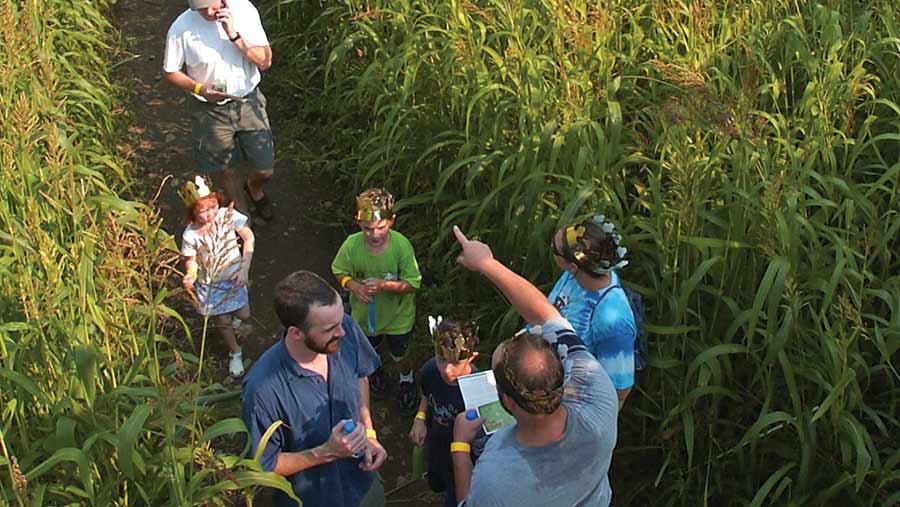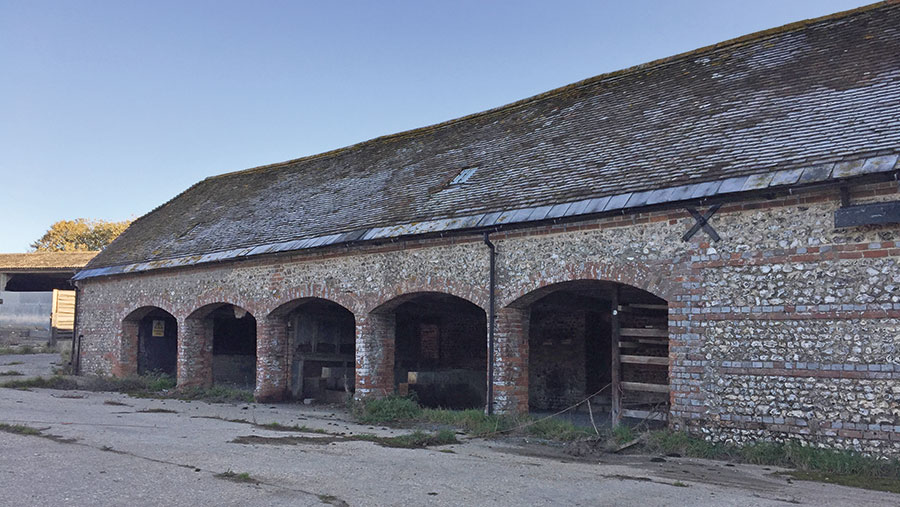Business Clinic: How to assess a farm diversification opportunity
 CJ Gunther/EPA/REX/Shutterstock
CJ Gunther/EPA/REX/Shutterstock There are two common misconceptions relating to diversification. The first is that “it worked for my neighbours, so it must work for me” and second, that having a diversified enterprise will automatically lead to an increase in the value of the farm.
Once these two assumptions are put aside, a good place to start is a thorough appraisal, including benchmarking, of the current business. Anyone considering diversifying because their current business generates insufficient profit is making a mistake if they see diversifying as the answer.
In some cases it is worth looking at how profitability of the existing business can be improved and what is hampering progress into that top 25% bracket.
Letting empty agricultural buildings and the business rate risk
Be wary of what a building will be used for, as exemption from business rates will only continue to apply if it is used solely in connection with agricultural operations.
The 100% exemption from rates is automatically lost where any part is used for non-agricultural purposes or any let out to a non-qualifying occupier. One way to reduce the effect would be to let out space for only part of the year, as the reduction of the exemption may be pro-rata for the period of non-agricultural use.
There are also some rates reliefs, such as the rural rate relief scheme, which may be available depending upon the type of business.
For example, the sole village shop or post office with a rateable value of less than £8,500 and the sole village public house or petrol station with a rateable value of less than £12,500 are entitled to 50% mandatory rate relief.
Separately, the small business rates relief threshold below which businesses pay no rates is £12,000, if the property in question is the businesses’ only rateable premises.
See also: Business Clinic – diversification advice for tenants
If a thorough appraisal concludes that a new enterprise is the answer, those contemplating a new venture should consider how it might substitute or add value to the existing enterprises. For example, could meat production be linked with a café or a retail outlet, whether physical or web-based?
Understanding the resources (labour, skills, capital, land, buildings and so on) available to the business is crucial.
Alongside any additional labour and management demands, will the enterprise demand new skills or training? Could it create the opportunity to fill current labour troughs?
For any potential diversification, getting some important factors right will go a long way to making sure the enterprise is a success. These include:
1. Location
Good access to your target market/population is paramount. Use a source such as Experian to give you some key data and employ a GIS mapping expert to identify population numbers and do some drive time analysis to help determine whether or not there are enough people within a specific drive time of your diversification.
For some enterprises – for example, mountain biking, people will drive for longer, say two hours, than to get to others such as a farm shop.
It is also worth looking at local planning policy to identify any new settlements or infrastructure projects in the pipeline, or conversely new diversification projects in a catchment that might positively or negatively affect the success of a diversification project.
2. Target market
This is linked to location, but also the local competition. It cannot be assumed that demand is there regardless of the level of competition.
The diversification plan must be matched to an identified target market. Ignoring the competition is a big risk.
If the decision is to go ahead, an appraisal will form the foundation to business plans and the monitoring of these as the project progresses is crucial – never take your eye off the ball.
3. Capital investment
Any diversification will require a degree of capital investment, but it’s important to not get carried away.
It’s best to start with the bare minimum to create a successful scheme and follow this with a step-by-step investment to maintain and improve a diversified business.
This could take the form of café next to a farm shop, or upgrading facilities at a camping or glamping site.
Projects with the highest failure rate are those that involve a high initial capital investment and uncertain or weak income.
Making sure capital investment is matched to trading risk and anticipated revenue is essential. n
Case study: Normandy Farm, Winterbourne Stickland, Dorset
This redundant farmstead has a range of traditional and modern farm buildings of about 23,000sq ft. There is a large area of off-road parking and excellent access from most local main roads.
The site has the benefit of superfast broadband and a voice over internet protocol telephone system, so is ideal for office space.
Considerations for developing the buildings include the requirement for planning permission for a change of use. In such projects, interiors should not be converted without understanding what type of potential occupiers are out there. It might be there is plenty of demand for multiple small units for start-ups or there is a local established expanding business requiring office space and a large storage area.

Buildings at Normandy Farm are being converted to office space
Once the tenant types have been identified, the design should be kept sympathetic to the surrounding landscape and structures.
A structured project management plan is essential and must be adhered to, factoring in delays due to unknowns such as bad weather.
Void periods are a landlord’s worst enemy, so it is important to keep these to a minimum.
Homework on local market rents is essential and landlords should consider some flexibility in agreeing terms with a new tenant such as a rent-free period – it’s better to have an occupied building than no tenants at all.
Loss of income compensation
A local infrastructure project to widen a road is going to have a negative effect on a thriving farm shop and café enterprise, both in terms of deliveries and visitors during the construction phase, with the long-term outcome unknown.
There is a reasonable chance of an entitlement to compensation for losses in this case, writes Clive Beer, head of rural consultancy Savills.
It is important to keep in regular touch with the acquiring authority (the body using any compulsory purchase powers to take land for the project) to flag up any practical concerns.
This body will also be responsible for compensating those affected, but who are not having any land or other assets taken.
The acquiring authority will usually try to resolve issues before any losses occur, but where they are unavoidable, a record must be kept of all disturbance costs incurred, including time, before and during the construction process.
In this case, while the infrastructure project is not acquiring any land, if the diversification enterprise has any land blighted by the scheme it may be possible to compel the acquiring authority to buy the land.
Compensation will also be paid for any future effect the infrastructure project has on the value of the property and the acquiring authority will usually propose accommodation works to mitigate this effect.
This can include tree planting, boundary fencing and noise-reduction materials. It is possible to negotiate accommodation works before the details of the scheme have been finalised, so early engagement is again important.
Compensation is also payable for all disturbance and loss of income incurred as a direct result of the scheme.
It is important to note that any compensation received is treated as a disposal of the asset and so is liable to capital gains tax.
Do you have a question for the panel?
 Outline your legal, tax, finance, insurance or farm management question in no more than 350 words and Farmers Weekly will put it to a member of the panel. Please give as much information as possible.
Outline your legal, tax, finance, insurance or farm management question in no more than 350 words and Farmers Weekly will put it to a member of the panel. Please give as much information as possible.
Send your enquiry to Business Clinic, Farmers Weekly, RBI, Quadrant House, The Quadrant, Sutton, Surrey SM2 5AS.
You can also email your question to fwbusinessclinic@rbi.co.uk.
